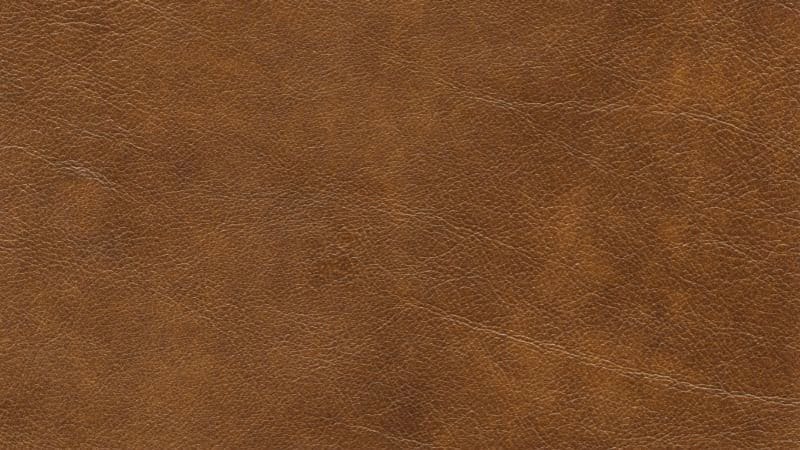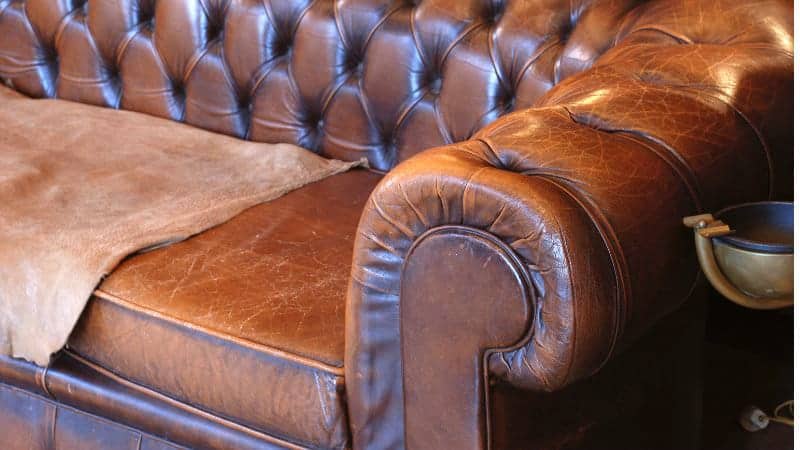
Key Takeaways:
- Neither PU (polyurethane) leather nor real animal leather is particularly environmentally friendly, but real leather generally has a higher environmental impact compared to PU leather.
- PU is a kind of vegan leather that uses animal-free material, so no animals are directly harmed in its production.
- PU requires fewer resources and has a lower carbon footprint than traditional leather tanning.
- PU is made from plastic polymers derived from non-renewable fossil fuels like petroleum.
- Efforts are made to develop more eco-friendly plant-based vegan leathers from materials like pineapple leaves, mushrooms, or apple waste that can biodegrade.
Things You Should Know About Leather
Leather is a versatile material that has been used for centuries to create a wide range of products, from clothing and accessories to furniture and tools.
When talking about leather, there are two categories that often come to mind: real leather and vegan leather.
Real leather is often made from cowhide, while vegan leather is generally made of chemical materials. The appearance of vegan leather is very similar to real leather, but their production process is quite different.
What is Real Leather?
Real leather, also known as genuine leather or 100% leather, refers to leather that is made entirely from the hide or skin of an animal, without any artificial materials or bonding agents. When purchasing real leather goods, like handbags, you may find some markings. These markings are the remnants of the animal.
What is Vegan Leather?
Vegan leather, also known as faux leather or artificial leather, is a material designed to mimic the look and texture of genuine leather derived from animal hides, but without using any animal products.
There are two materials used to make this type of leather :
1. Synthetic Materials:
- Polyurethane (PU) – One of the most common synthetic materials used, made from petroleum. Often combined with a fabric backing.
- Polyvinyl Chloride (PVC) – Another plastic based material, though its use is declining due to environmental concerns.
2. Natural Plant-Based Materials:
- Pineapple leaves (Piñatex)
- Cork
- Cactus
- Mushroom mycelium
- Fruit waste like apple peels, grape skins
- Agricultural waste like corn, bamboo, etc
Those concerned about environmental impact often wonder which one is more environmentally friendly and sustainable, real leather or vegan leather, but there is no definite answer.
Generally speaking, vegan leather is made from synthetic materials, not made from animals, so the energy and water waste is not that high, but it will release toxic chemicals when it degrades, and the natural plant-based material can also not always be biodegraded.
Since natural plant-based material is a new material that is not widely used in the leather industry, this article will take PU leather as an example to provide different perspectives on which kind of leather is more environmentally friendly with fewer sustainability issues.

How Real Leather Impacts on the Environment
The production of real leather is not environmentally friendly from the beginning. Significant greenhouse gases will be emitted from raising livestock like cattle. Massive land was used for cattle grazing which led to serious deforestation.
If you want to turn raw animal hides or skins into leather, you can’t avoid tanning. The tanning process involves treating the hides with specific tanning agents to prevent them from decaying and make the material more durable and suitable for various applications.
- Vegetable tanning: The hides are soaked in a tannin solution, which binds to the collagen proteins in the hide.
- Chrome tanning: This is the most widely used method today, accounting for around 90% of leather production globally. It involves treating the hides with basic chromium sulfate salts, which form cross-links between the collagen fibers.
- Aldehyde tanning: In this method, synthetic tanning agents like glutaraldehyde or oxazolidine compounds are used to tan the hides.
Except for Vegetable tanning, no matter which tanning method is used, pollution will occur from toxic chemicals like chromium, formaldehyde, and cyanide.
Furthermore, real leather production has a high water footprint; according to some research, even a leather tote bag requires over 17,000 liters of water.
However, the most criticized aspect of leather products is that they use animal skin. Although this can be counteracted by the fact that leather is a by-product of the meat industry or food industry, some people still don’t want to sacrifice a cow for a leather bag.
Is PU Leather More Environmental Friendly?
PU leather avoids the direct animal welfare concerns of real leather. However, it is made from non-renewable, fossil fuel-derived plastics and petrochemicals. The manufacturing process of PU leather involves the use of volatile organic compounds (VOCs) and other toxic chemicals.
PU leather is non-biodegradable and can release plastics and microplastics into the environment as it breaks down over centuries in landfills, which may contribute to plastic pollution and impacts on ecosystems and wildlife.
In summary, while neither is a perfect solution from an environmental standpoint, PU leather may have a somewhat lower impact than conventional leather tanned with harsh chemicals. But ideally, more sustainable plant-based and plastic-free leather alternatives should be developed and adopted.
*Tips: When considering buying leather products, look for the Leather Working Group (LWG) certification, which ensures that the leather made from tannery is produced with a commitment to reducing energy consumption, minimizing waste, and having a clear supply chain that traces back to the slaughterhouse.
Sustainable Alternatives of Like Leather Material

If you like leather products but want to reduce harm to the environment, you also have the following options:
Cork Leather:
- Sourced from the cork oak trees fiber without harming the tree itself.
- It’s biodegradable, recyclable, and replenishable.
- Soft, lightweight, and water-resistant.
Recycled Rubber:
- Utilizes waste rubber from tires and other products.
- Transforms into a material with a leather-like texture.
- Durable and often used for bags and footwear.
These materials offer you sustainable choices that can reduce your environmental footprint. However, these products are currently rare on the market.

